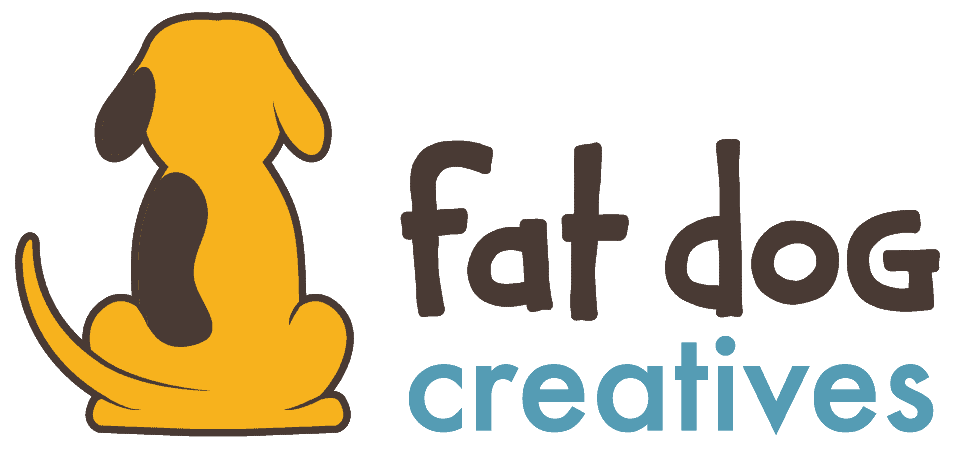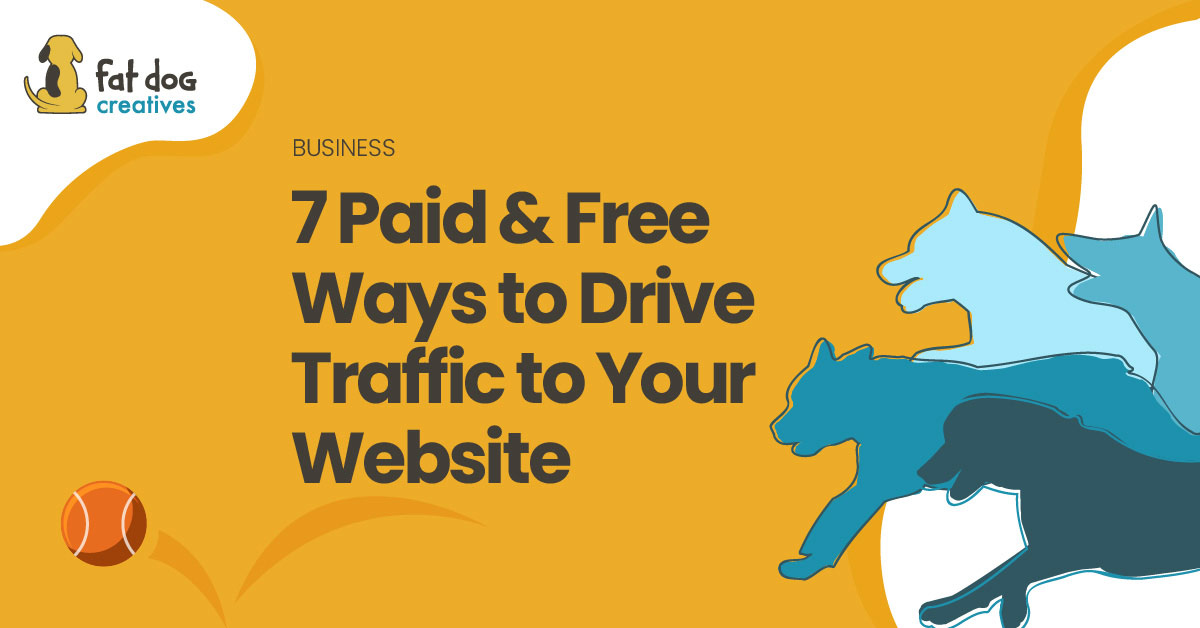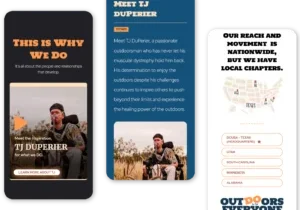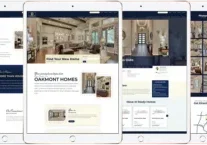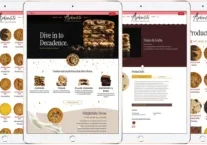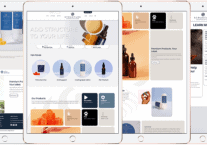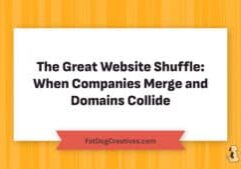7 of the Best Paid and Free Avenues to Drive Traffic to Your Website Right Now
Share this article.
By Warren Laine-Naida Oh, God. Another blog post about increasing traffic to my website? Wrong. Yes, we lured you here on that pretext, but you’re going to leave this post thinking dollars instead of clicks. Sound good? Excellent. Pull up a sofa and grab your coffee! So, what is Traffic? I guess you know, otherwise, you wouldn’t be here. However, on the off chance you arrived expecting help on your driving test, let’s refresh. Short and sweet, traffic refers to the number of visitors to a website. In other words, all those users who visit your website. Like you’re doing right now. You’re traffic on this website. Welcome! But wait. Traffic is good, but does it pay your bills? Probably not. Just because people visit your website doesn’t mean they’re buying anything. That’s when you can start to count the dollars – after a sale. So, you need conversions. What are conversions, and what’s the diff? Well, do you have a favorite coffee shop where you go and work on your laptop? Sure, you do. And I bet you aren’t alone. Everyone loves working at a coffee shop. Sadly, it won’t stay in business very long if all that traffic never actually buys a coffee. That’s no longer a coffee shop, that would be a free workspace. The massive profits from the coffee you bought, pay for the furniture, the music, the internet connection, and the electricity you’re using “for free”. “A coffee shop will enjoy a profit margin of 25%, or on average between $55,000 and $100,000 in profit.” SmartCoffeeShop.com And what is a Conversion? Put simply, a website conversion is turning the casual visitor into something useful: a subscriber, a registered user, or a paying customer. Someone who buys coffee, or brings in paying customers, or helps clean up at the end of the day. Not just someone sitting there on their laptop. Unfortunately, it still happens that people focus more on traffic growth and less on conversion and conversion rates. The problem with this is that if you focus exclusively on traffic metrics, you have no real control over your growth. I know you aren’t one of those people though, so when we talk about “traffic” I want you to think about how you’ll be turning those visitors into your customers. Read “traffic”, think “conversions”. “If you only focus on raising your visitor numbers, you’re eventually going to hit a ceiling, where you just can’t bring in any more visitors, either because you’ve reached the vast majority of people in your niche or because your niche is so large that you can’t afford to reach anymore of them.” NeilPatel.com What Came First – the Traffic or the Conversion? But how can I get any conversions if I don’t have any traffic? Ah, that old question. It always gets asked. You’re right to ask. That’s probably why you’re here. Though if you ARE here looking for help with your driving test, please click here. Sorry, we didn’t add this link earlier. I wanted to make the importance of conversions very clear. Also, you’ve probably finished that first cappuccino now, so why not order another one before reading on. How Can I Get Free Traffic Sources? The best things in life are free! Very true. If you get traffic and conversions for free, you’re laughing. Customers walking into your coffee shop and ordering endless lattes to go, and you never spend a cent on ads? Brilliant, right? I’m going to talk about how you can pay for traffic later, but let’s focus first on some of the free ways of getting you traffic. I mean conversions! Maybe you never even NEED to worry about paying. Traffic is no longer possible without social media That might sound a bit draconian, especially with some of the scary things happening on social media these days, but it is the best way to get you noticed and people onto your website. But which platform do you need to get on board? When selecting social media channels, think about: What are your goals? Who do you want to reach? Which content is interesting and relevant for them? Not every topic works equally well on all channels. And not every channel is suitable and promising for every website. The goal is to reach customers exactly where they are. Is your content image-focused? Instagram. Are you offering professional, B2B content? LinkedIn. Family and Friends? Community Building? Facebook. Like a tech-heavy marketing mix? Twitter. Pay Attention to SEO SEO = Search Engine Optimization. What is this doing in the second position?? Who wrote this article anyway? Just copy and paste this section above social media for me? Thanks. SEO is the holy grail of getting people onto your website. It is the cornerstone. The coffee bean to your coffee. The charger to your phone. It just, IS. There is so much to say about SEO that a friend of mine teaches a two-week course on the subject. Five days a week, six hours a day. And they tell me the course should be twice that long! LOL SEO has three parts: On Page SEO (everything on your website from images to the correct number of H1s), Off Page SEO (everything that attracts people to your website that is found on social media and co., and Tech SEO (everything that technically affects your traffic like server speed and…
Oh, God. Another blog post about increasing traffic to my website? Wrong. Yes, we lured you here on that pretext, but you’re going to leave this post thinking dollars instead of clicks. Sound good? Excellent. Pull up a sofa and grab your coffee!
So, what is Traffic?
I guess you know, otherwise, you wouldn’t be here. However, on the off chance you arrived expecting help on your driving test, let’s refresh.
Short and sweet, traffic refers to the number of visitors to a website. In other words, all those users who visit your website. Like you’re doing right now. You’re traffic on this website. Welcome!
But wait. Traffic is good, but does it pay your bills? Probably not. Just because people visit your website doesn’t mean they’re buying anything. That’s when you can start to count the dollars – after a sale. So, you need conversions. What are conversions, and what’s the diff?
Well, do you have a favorite coffee shop where you go and work on your laptop? Sure, you do. And I bet you aren’t alone. Everyone loves working at a coffee shop. Sadly, it won’t stay in business very long if all that traffic never actually buys a coffee. That’s no longer a coffee shop, that would be a free workspace. The massive profits from the coffee you bought, pay for the furniture, the music, the internet connection, and the electricity you’re using “for free”.
“A coffee shop will enjoy a profit margin of 25%, or on average between $55,000 and $100,000 in profit.”
SmartCoffeeShop.com
And what is a Conversion?
Put simply, a website conversion is turning the casual visitor into something useful: a subscriber, a registered user, or a paying customer. Someone who buys coffee, or brings in paying customers, or helps clean up at the end of the day. Not just someone sitting there on their laptop.
Unfortunately, it still happens that people focus more on traffic growth and less on conversion and conversion rates. The problem with this is that if you focus exclusively on traffic metrics, you have no real control over your growth.
I know you aren’t one of those people though, so when we talk about “traffic” I want you to think about how you’ll be turning those visitors into your customers. Read “traffic”, think “conversions”.
“If you only focus on raising your visitor numbers, you’re eventually going to hit a ceiling, where you just can’t bring in any more visitors, either because you’ve reached the vast majority of people in your niche or because your niche is so large that you can’t afford to reach anymore of them.”
NeilPatel.com
What Came First – the Traffic or the Conversion?
But how can I get any conversions if I don’t have any traffic? Ah, that old question. It always gets asked. You’re right to ask. That’s probably why you’re here. Though if you ARE here looking for help with your driving test, please click here. Sorry, we didn’t add this link earlier.
I wanted to make the importance of conversions very clear. Also, you’ve probably finished that first cappuccino now, so why not order another one before reading on.
How Can I Get Free Traffic Sources?
The best things in life are free! Very true. If you get traffic and conversions for free, you’re laughing. Customers walking into your coffee shop and ordering endless lattes to go, and you never spend a cent on ads? Brilliant, right?
I’m going to talk about how you can pay for traffic later, but let’s focus first on some of the free ways of getting you traffic. I mean conversions! Maybe you never even NEED to worry about paying.
Traffic is no longer possible without social media
That might sound a bit draconian, especially with some of the scary things happening on social media these days, but it is the best way to get you noticed and people onto your website. But which platform do you need to get on board?
When selecting social media channels, think about:
- What are your goals?
- Who do you want to reach?
- Which content is interesting and relevant for them?
Not every topic works equally well on all channels. And not every channel is suitable and promising for every website. The goal is to reach customers exactly where they are.
Is your content image-focused? Instagram. Are you offering professional, B2B content? LinkedIn. Family and Friends? Community Building? Facebook. Like a tech-heavy marketing mix? Twitter.
Pay Attention to SEO
SEO = Search Engine Optimization. What is this doing in the second position?? Who wrote this article anyway? Just copy and paste this section above social media for me? Thanks. SEO is the holy grail of getting people onto your website. It is the cornerstone. The coffee bean to your coffee. The charger to your phone. It just, IS.
There is so much to say about SEO that a friend of mine teaches a two-week course on the subject. Five days a week, six hours a day. And they tell me the course should be twice that long! LOL
SEO has three parts: On Page SEO (everything on your website from images to the correct number of H1s), Off Page SEO (everything that attracts people to your website that is found on social media and co., and Tech SEO (everything that technically affects your traffic like server speed and your website CMS).
At the heart of SEO is all about giving answers to the people who browse the Internet. That’s really it. You should always have the needs and search intentions of your target group in mind.
Follow these 7 steps to achieve your first SEO success:
- Find out the search intentions of your target audience
- Start with a first keyword analysis
- Combine the found keywords with your website
- Check the ranking of the keywords using traffic analysis TIP: Don’t try to rank for “coffee machine”. Write posts about “Automatic coffee machine for your office that also foams milk” instead. Long-tail keywords beat short-tail keywords every time.
- Start the SEO process with both On Page and Off Page measures
- Check the effectiveness of all SEO measures and optimize them further
- Repeat the entire process!
SEO is so important because most of the web traffic is generated through search engines. Even though paid advertising or social media can generate clicks to your website, the right search engine optimization pays off in the long run.
Optimizing your website for search terms will significantly increase your findability on Google & Co. I also mean DuckDuckGo, Bing, Yahoo, Swisscows – wherever your audience searches. With relevant and unique content, you will noticeably increase the traffic on your website and thus successively improve your success (get conversions).
“Despite the acronym, SEO is as much about people as it is about search engines themselves. It’s about understanding what people are searching for online, the answers they are seeking, the words they’re using, and the type of content they wish to consume. Knowing the answers to these questions will allow you to connect to the people who are searching online for the solutions you offer.”
Moz.com
Be Active on the Internet
Be present. Get involved. Write, like, share, say hello, say thanks. That’s it. That’s the section.
Content Marketing (start with Blogging)
70-80% of search engine users focus only on organic results. This is great because your SEO is ramping up and you know what people are looking for. Now you can kick that up a notch with some content marketing.
Content marketing? That’s everything from this post you are reading, to the cartoons your kids watch, to the swag you get at events, to the free magazines you get at the shops. With each piece of content – in whatever form that may take – you are noticeably expanding awareness for your brand or product. Cool right? Content marketing rocks.
Valuable quality content is the basis for a successful and targeted online presence and an essential search engine ranking aspect. Ideally, people will find it equally on a company website, in a blog, and on social media channels.
With the right content strategy, you can create more and more content around a key topic over time and work towards ranking for the shorter, more difficult SEO keywords.
It’s important to develop a content plan so you never run out of ideas for blogs or content, and even more important to then stick to it. Creating great blogs or original business content can take a lot of time, so some businesses prefer to outsource content planning, development, and writing.
Fun Fact: You don’t need to write blog posts to be blogging
You can drive traffic to your website without writing a single word. Are you video inclined? Post a video on YouTube and link it to your website. Does the sound of your voice stop traffic? Then how about podcasting? The pen is mightier than the sword, but if you don’t have a pen you need to think out of the box.
“There are many platforms for podcasting for you to try. If you’re not sure you’ll enjoy it or keep up with it, don’t invest in equipment and hosting until you do know. That’s why I recommend starting with Anchor FM. It’s a free platform, and it pushes your podcasts to all the other streaming services, like Apple’s iTunes and Podcast app, iHeart Radio, and Stitcher to name a few.”
FatDogCreatives
But, I Have a Shop. How Do I Get my Online Store Noticed?
Blogging is Good for Your Online Shop
Blog articles are often the first point of contact a potential customer has with your company. They may have just identified a problem and are researching how to solve it. And because you can answer that very question in a blog post, you end up in their search results.
People buy things to solve a problem that they have. It might be a big problem like replacing a fuel pump. It might be a small problem like boredom. Shopping is the cod-liver oil of the 21st century.
Write a captivating headline, drop in a video, a how-to section, as well as a good meta description, the chances are pretty good that your potential customer will click on the link to your article.
A blog improves your Google ranking too! Google evaluates various factors of your web presence and creates a ranking from them. Among them is the timeliness of your website. If Google regularly finds new content that can be indexed, this increases your relevance.
Are you selling anything on your website – I mean, besides yourself? Blogging is a great sales tool as well.
“What will be your first blog post as a sales tool? When it comes to blogging, think about how you can address pain points. You’ll make your life easier by publishing content that answers frequently asked questions.”
BridgetWillard.com
Email Marketing is Good for Your Online Shop
A well-maintained inventory of your email contacts or self-generated inbound leads is an important source with which you can increase your website traffic. However, the “good old” newsletter is less what your customers are interested in here. Instead, as always, successful inbound marketing is about delivering relevant and solution-oriented content that you use to add value.
You can nurture these sales leads with useful content and drive them to your website, again and again, moving them closer to a sale in the process.
Qualified leads are primarily critical to website traffic from email marketing. These are contacts that you have ideally generated yourself with content offers such as whitepapers, online training courses, or e-books, and have permitted you (opted in) to send them further relevant content by e-mail.
“For an e-commerce store, the ultimate way to determine the value of website traffic is conversions; are the people who come to your website eventually buying? Understanding what information resonates with your audience and what does not will help you make better decisions about your content—and that will boost conversions.”
MailChimp.com
Free Sounds Great! Now, What Are the Best Paid Traffic Sources?
Google Ads
If you’ve not been successful with increasing traffic to your website using organic means, then you can use PPC, or Pay Per Click methods. The most important one is Google Ads. Why? Google controls 95% of the organic search traffic, and its ads are connected to their organic search engine. So, you know your organic and paid results are going to make sense working together.
Search engine marketing (SEM, primarily Google Ads) is an important method to gain more visibility and reach in Google. Unlike organic SEO, which usually takes a longer time to take effect, Google Ads can be managed quickly and agilely.
Google Ads don’t need to be that expensive. You can start at a dollar a day and get results. Yes, you can. We can put you in touch with people if you want to give that a try.
Some of the advantages of using Google Ads.
- You reach users from your target group who are ready to buy
- Through data-driven marketing, Google Ads are scalable
- You can pay only when a user searches for a term you have provided, clicks, and arrives at your website
- You can limit the advertising budget at any time, expand it or pause campaigns
- Whether regional, national, or international – you determine where your ads are shown
Click here to find out more about how you can start with Google Ads.
Social Media Ads
Social Ads on social networks such as LinkedIn, XING, Facebook, Instagram, or Twitter can also be used to quickly and effectively build up additional visibility. Be careful. Paying for traffic to your website can get expensive. Make sure you’re offering content that answers a need.
Facebook is particularly interesting because of its differentiated targeting. Thanks to precise targeting options, social media advertising can be delivered based on interests and without major detours. https://www.facebook.com/business/ads
Since Instagram has been part of the Facebook empire since 2012, you have numerous targeting methods at your disposal here. What’s more, you can also manage your Instagram campaigns via the Facebook Business Manager. business.instagram.com/advertising
If you want to promote your company on Twitter, you can use Promoted Tweets to draw attention to yourself or your products and thus generate more followers. Promoted Tweets differ from standardized Tweets only by an inconspicuous “sponsored” notice, which makes the ads look very natural and users are less bothered by them. business.twitter.com/en/advertising.html
Advantages of Social Ads:
- Millions of potential customers
- Global and regional targeting
- Precise analysis for ad optimization possible
- Remarketing thanks to detailed tracking
- Effective lead generation is possible
- Increase of traffic and conversions through extensive modification options
BUT: Remember to focus on quality instead of quantity
The algorithm of social networks prefers to place ads that are of a high (informative and/or aesthetic) standard and especially those that meet with positive responses. Take advantage of this fact and save money by placing ads with high user value.
In any case, it only always makes sense to focus on advertising that actually interests your target group. You can only achieve sustainable success if you advertise in the interests of your customers.
Natives Ads with Outbrain
What are Native Ads Anyway?
Native advertising is the use of paid ads that match the look, feel, and function of the media format in which they appear. You’ve seen these on many websites perhaps without noticing them. Most large brands use Native Ads. Native ads are often found in social media feeds as well like TikTok, Twitter, and Instagram (stories), or as recommended content on a web page.
“Unlike display ads or banner ads, native ads don’t really look like ads. They look like part of the editorial flow of the page. The key to native advertising is that it is non-disruptive – it exposes the reader to advertising content without sticking out like a sore thumb.” outbrain.com
What can you do with Outbrain?
Through Outbrain, you can place content on the most trafficked websites in the world like MSN, SkyNews, Time, CNN, Adidas, Oreo, Home Depot, Ferrero, etc.
You select an article or landing page that you know readers will be excited about with the information on it and select suitable prospect profiles to which this should be played out.
When a person from this prospect profile comes to one of the publisher’s websites, your ad for the professional article is shown there. Mostly in the format “This could also interest you” below the read article.
What do you need to watch out for with Native Ads?
The main mistake is probably the lack of storytelling. If you just use a normal product subpage of your website, then you must expect a high bounce rate. The reader is just in browse mode, they aren’t searching. So, you need to create an element of curiosity and then actually deliver content that creates value for the reader.
BUT – Marketing your Content via Blogging is the Still the Best Way to Drive Traffic to Your Website
Like this post! Did you see it on social media? Did you search for “Way to drive traffic to my website” on Google and find it in the SERPs?
Blogging is probably the very best way to drive traffic to your website. Why? Blogging creates new and dynamic content for your website, and regularly – like weekly or monthly. Weekly is better!
If you manage a blog properly and integrate it with other pages on your website, your site can benefit from a steady stream of new, dynamic content. This can positively impact your SEO ranking and add value for visitors. Blogs also have a positive impact on the perception of your business. The creation of new content increases the authority of your website and makes your website a “go-to” destination for people looking for information.
“If you’ve struggled with driving traffic to your website, you’re not alone. According to 2020 research done by Content Marketing Institute, 63% of content professionals are challenged with finding enough staff skilled in content strategy which is one of the top drivers of website traffic.”
HubSpot.com
Wait! I Still Need Help
Sometimes coming up with content ideas isn’t that easy. We’re not all born journalists, disc jockeys, videographers, or photographers. That’s okay! The best place to begin is simply by clicking on your FAQ page. Those questions and answers are the sources of not only great content ideas but can also serve as an entire content marketing ecosystem.
You don’t have an FAQ page? Not yet you don’t. You can turn every single phone call you get from people into evergreen content simply by adding them to your FAQ page and repurposing them into mega-cool content.
Step 1: Answer the phone call
WarrenLaineNaida.net
Step 2: Enter the Q&A on your FAQ page
Step 3: Write the (short – 200 characters) social media post
Step 4: Write the (longer – 600 words) blog post
Step 5: Publish your eBook (when necessary, or twice a year?)
Stop! Didn’t You See the Traffic Light?
Please pull over. This is the end of the post. The coffee shop is closing, and unless you’re that person paid in coffee to help clean up, we’re turning off the coffee machine and you should think of leaving.
Getting people to come to your website is an ongoing process. It’s never over. Getting traffic onto your site is not nearly as important however as getting the right sort of traffic – specifically conversions.
Conversions are people. People who are helped by the content you produce, who share it with others, and who perhaps even purchase something from you. This sort of traffic will enable you to keep your website around for a very long time.
Attract people by keeping your website fresh, relevant, useful, and interesting, and it will be valued and much visited. Much like your favorite coffee shop.
About Warren Laine-Naida
I believe that everyone deserves a world class digital presence even if they don’t have a world class bank balance. Nonprofit organisations, clubs, schools, and small business owners often have big plans but smaller budgets. Your goals are worthwhile, and I take pride in helping you achieve those goals at a reasonable price. It’s my job to help you choose the right strategies to connect with the right people, and I’ll do it at a price you can afford.
